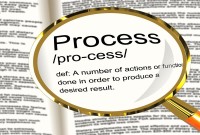- Home
- Business Processes
- Industry Knowledge
- Aerospace Industry
- Automotive Industry
- Banking Domain
- BFSI Industry
- Consumer/ FMCG Industry
- Chemicals Industry
- Engineering & Construction
- Energy Industry
- Education Domain
- Finance Domain
- Hospitality Domain
- Healthcare Industry
- Insurance Domain
- Retail Industry
- Travel and Tourism Domain
- Telecom Industry
- Leadership Skills
- eLearning
- Home
- Leadership
- Leadership Theories
- Skills Approach Application
Skills Approach Application
According to the three-skill approach of Katz, the individual's leadership abilities vary depending on where leaders are in a management hierarchy. The practical implication of skills approach to leadership is that leaders can improve their capabilities in leadership skills through training and experience.
Advantages of Skills Approach:
The skills approach to leadership describes leadership from a skills standpoint and provides a structure for understanding the nature of effective leadership. According to three-skill approach of Katz the importance of certain leadership skills varies depending on where leaders are in a management hierarchy. In Mumford’s skill model theory he proposes that leadership effectiveness is directly correlated to a leader’s competencies in problem-solving skills, social judgment skills, and knowledge. The biggest takeaway from these studies was the outcome that these skills can be learned and developed. The practical implication of skills approach to leadership is that leaders can improve their capabilities in leadership skills through training and experience. Hence they assist in defining a structured approach to leadership education and development and help to frame the curricula of organizational training and leadership development programs.
How to use this approach:
The learner can use the characteristics of the skills defined in this approach to do a comparative self –evaluation of oneself to identify one’s strengths and weaknesses with regard to these three skills; technical, human, and conceptual. This assessment provides insight into one’s own leadership competencies and based on the development areas identified, learners can take specific trainings to enhance their leadership effectiveness.
There are many questionnaires available based on these studies to assess individual's skills. They provide a useful self-help, but a word of caution here is that they cannot be used in research because they have not been tested for reliability and validity. A typical questionnaire is the "Skills Inventory" and you can also take the quiz designed by TechnoFunc called TechnoFunc’s Skill Inventory to assess your skills and development areas.
Self-Leadership Development Plan:
Given below are the steps to define a leadership development plan for yourself using the key concepts from this approach:
1. Do a self-assessment – Use TechoFunc’s Quiz
2. Identify your strengths and weaknesses
3. Identify your training needs.
4. Explore the relevant area on TechnoFunc’s website to learn more about the skillset you need to develop and explore the tools provided here to increase your effectiveness.
Related Links
You May Also Like
-
Reciprocal influence theory also known as reciprocal determinism is authored by Albert Bandura and states that an individual's behavior influences and is influenced by both the social world and personal characteristics. Three factors that influence behavior are the environment, the individual, and the behavior itself. Certain leader behaviors can cause subordinate behaviors and reciprocal influence on the leader by the group.
-
The Fiedler Model of leadership is a contingency theory and states that a leader's effectiveness is based on the situation. There is no one best style of leadership and the effectiveness of a leader in an organization depends on matching the leader to the situation. Leaders should determine the natural leadership style and assess the situation to flex the style.
-
What are the functions which a leader does to establish as a leader? What are the activities undertaken by them to become great leaders, rather revolutionary leaders? The most important tasks done by a leader in all situations are defining the vision, mission, and goals, leading the team, administrative functions, motivating followers, decision making and conflict resolution, and continuous development.
-
Blake and Mouton Managerial Grid is a style leadership model that identified five manager styles based on two dimensions viz concern for people and the concern for production. Managerial Grid uses concern for production style which is largely based on McGregor's Theory X.
-
In emergent leadership, the leader is not appointed or elected to the leadership role but emerges as the leader as he is perceived by others over time as a result of the group's interaction. A person steps up as the leader over time by taking on tasks voluntarily, helping others complete their tasks better, and building consensus among groups.
-
Normative leadership theories are built on moral principles and tell leaders how they ought to act. Victor Vroom formulated the normative model of leadership that specifically address leader behavior explicitly built on moral principles or norms. Normative leadership theories tell leaders how they should act to raise the moral performance inside the working group and manage their different responsibilities.
-
Leader-Participation Model provides a set of rules to determine the form and amount of participative decision making. It helps identifies different ways a decision can be made based on the degree of follower participation. It proposes a method for leaders to involve all members of the organization work together to make decisions.
-
There are four major factors in leadership called Leader, Follower, Communication, and Situation. The success of the leader is dependent on how the leader is effectively able to communicate and motivate followers to perform desired tasks using the appropriate leadership style best suited for the given situation. Interdependencies and dynamics of these four factors of leadership must be considered by a leader to be effective.
-
The Psychodynamic Approach to leadership focuses on leaders building an understanding of their personality characteristics to know why they act or react in certain ways. Psychodynamics theory aims to explain the dynamics of human behavior in which lies the essence of leadership, by analyzing various motives that govern a person's behavior. This information can be used to develop leaders and followers by understanding their responses based on their personalities.
-
The Valence Model of Leadership
The valence model of emergent leadership is based on a group-development sequence. As per the valence model, the process of emergent leadership passes through three distinct stages; Orientation, Conflict, and Emergence. Group members willingly start following and obeying the leader who has passed the "emergence threshold."
Explore Our Free Training Articles or
Sign Up to Start With Our eLearning Courses

About Us
Learning
© 2023 TechnoFunc, All Rights Reserved









